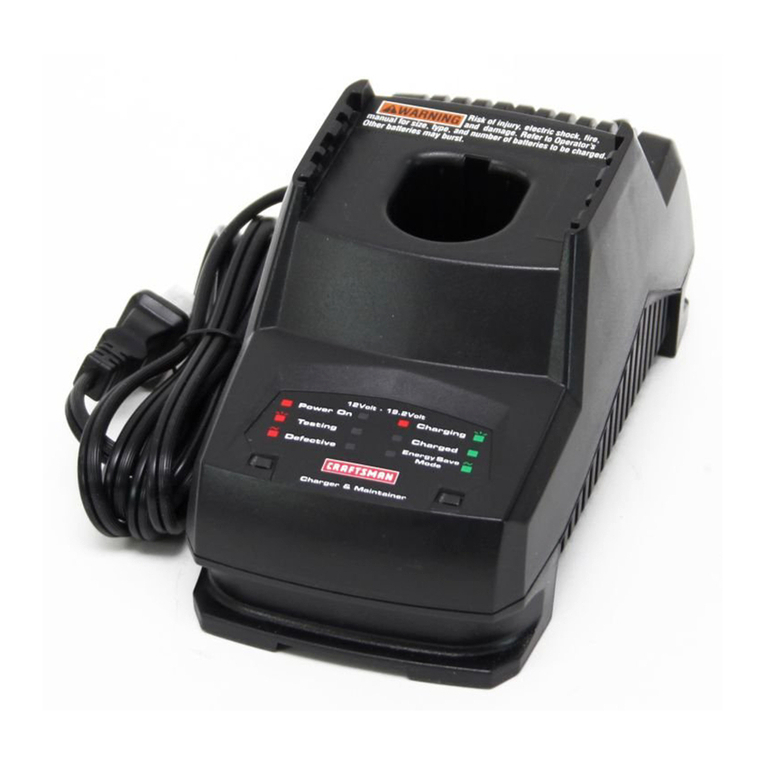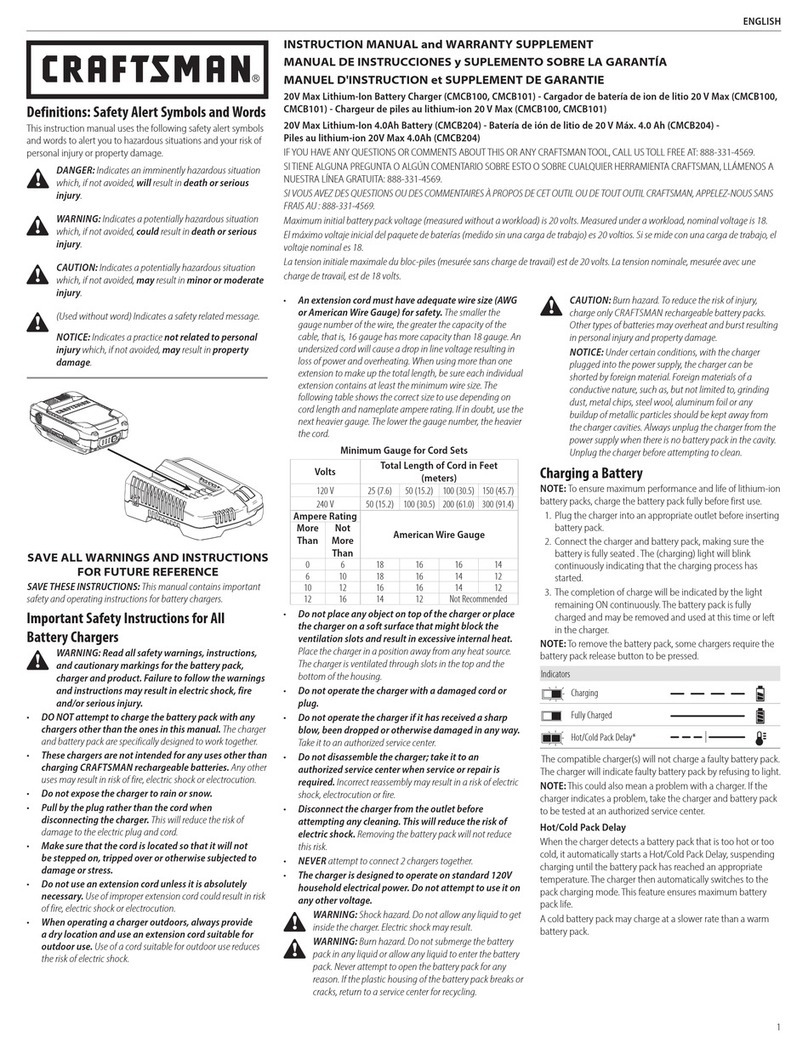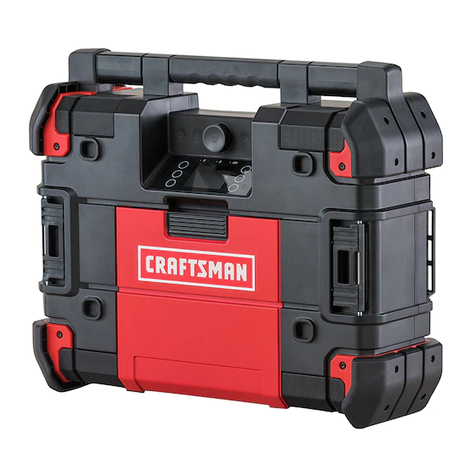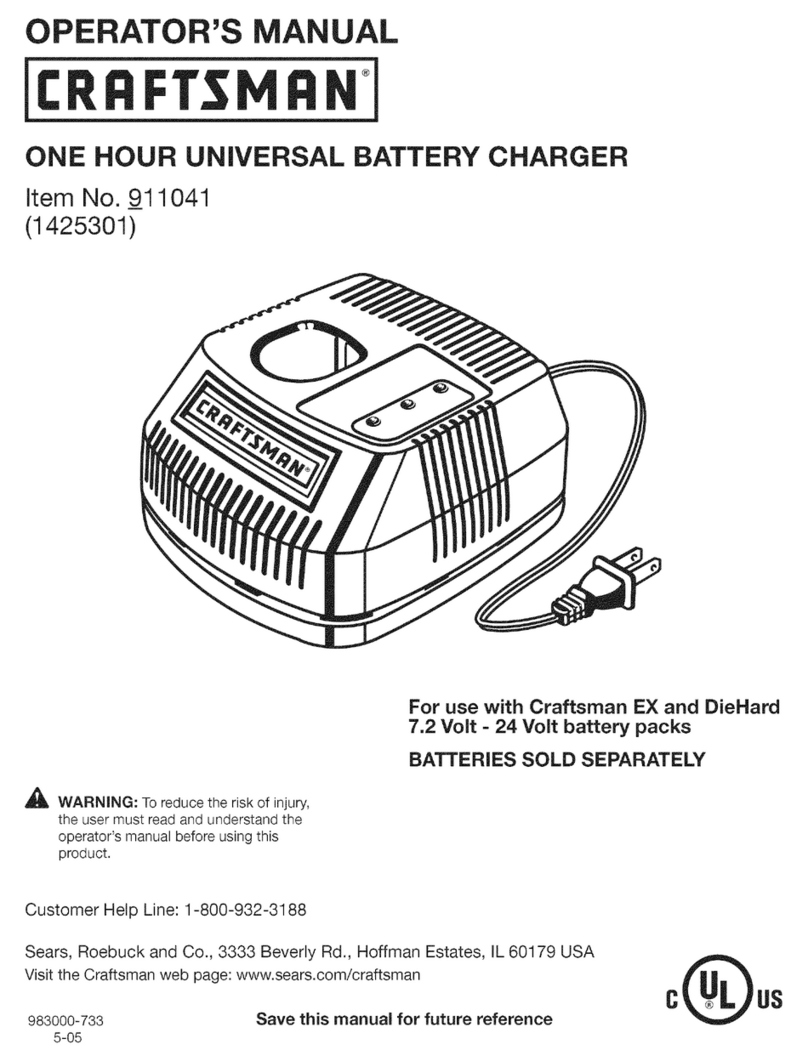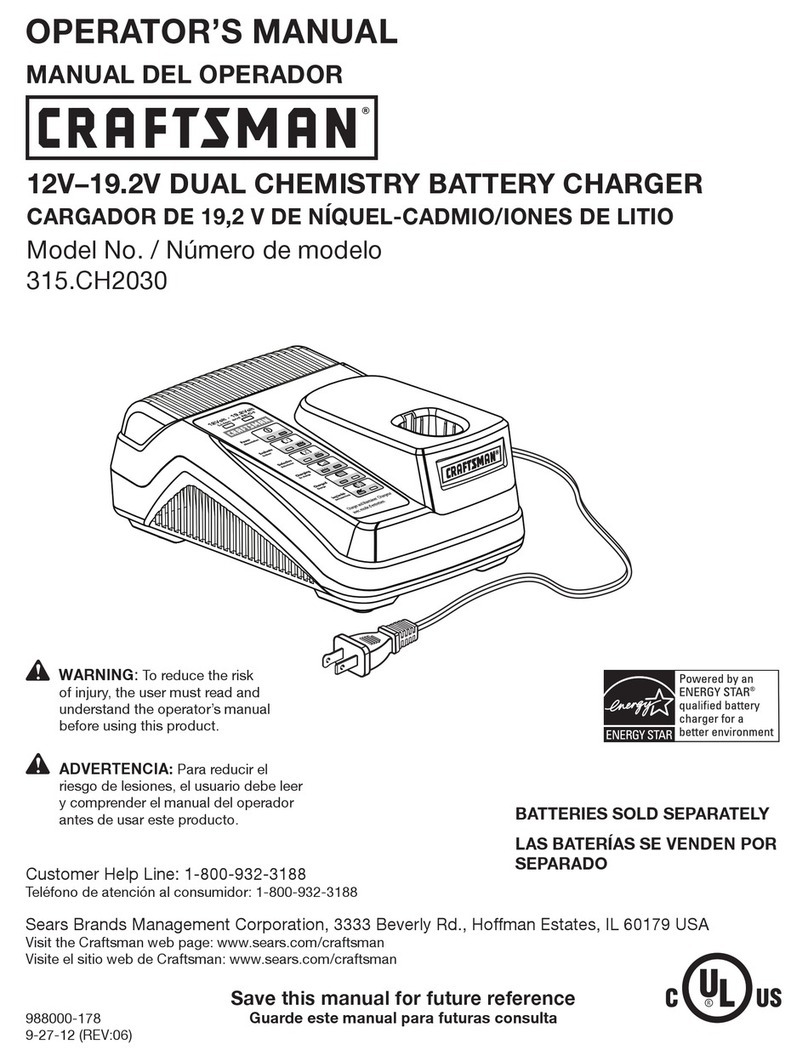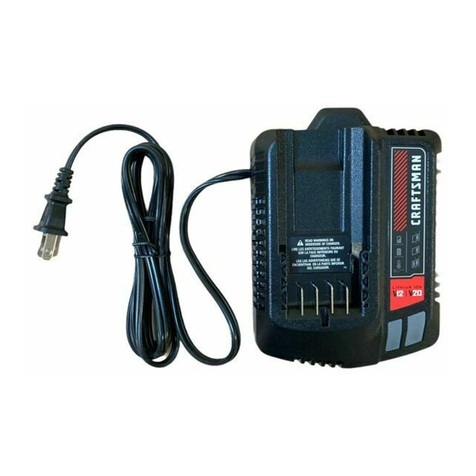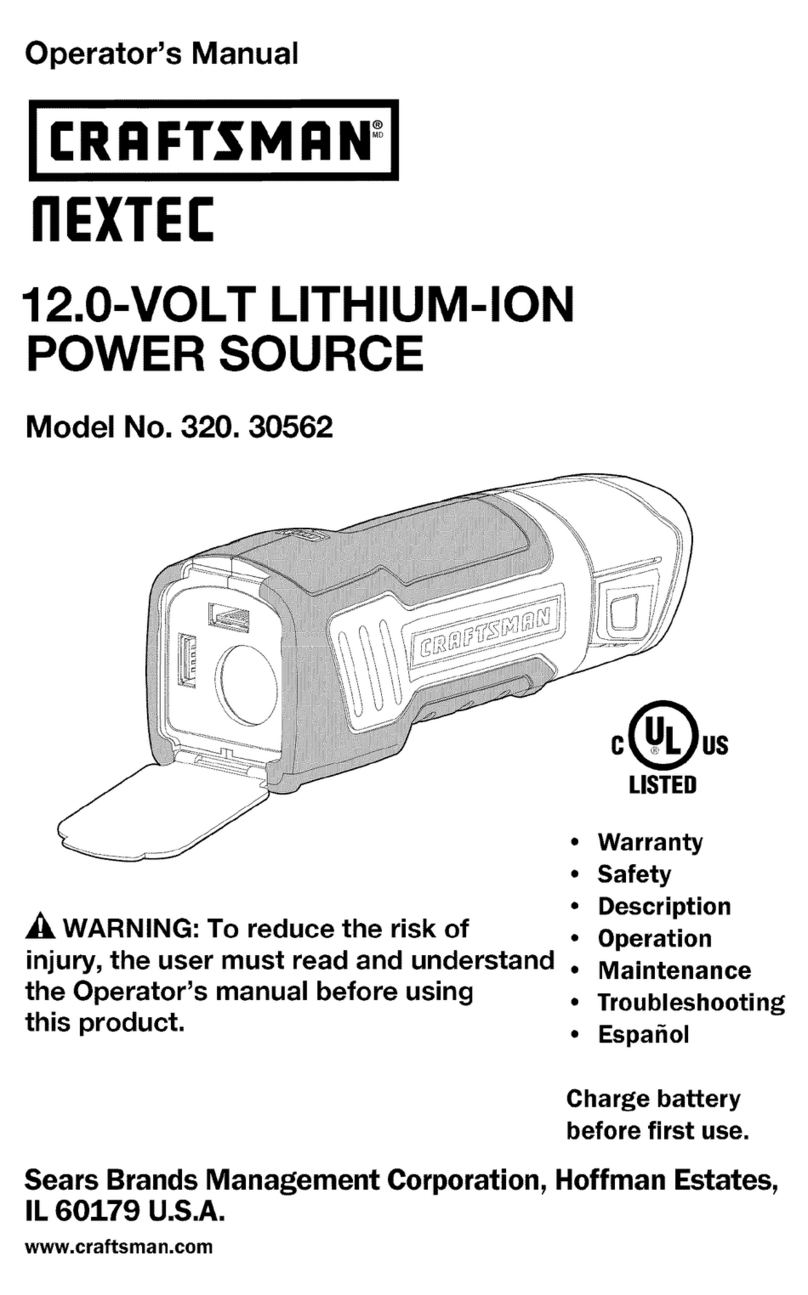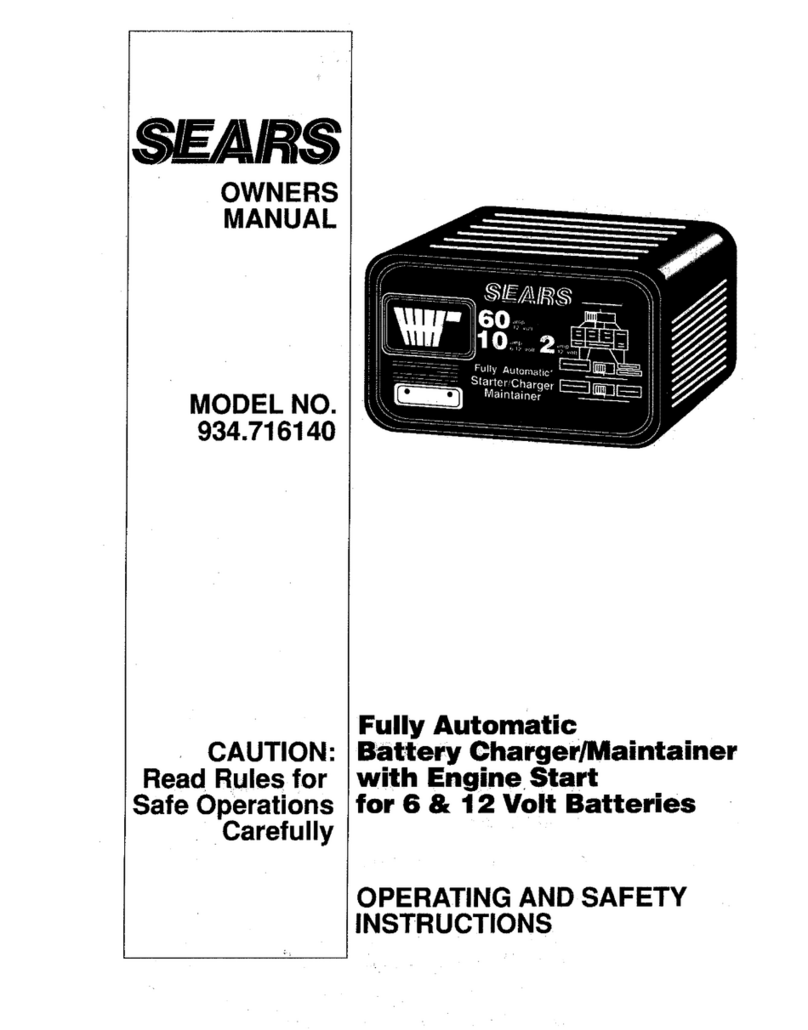
• 5 •
6.3 Check polarity of battery posts. POSITIVE (POS, P, +) battery post usually has larger diameter than
NEGATIVE (NEG, N, –) post.
6.4 Determine which post of battery is grounded (connected) to the chassis. If negative post is grounded to
chassis (as in most vehicles), see (6.5). If positive post is grounded to the chassis, see (6.6).
6.5 For negative-grounded vehicle, connect POSITIVE (RED) clip from battery charger to POSITIVE (POS,
P, +) ungrounded post of battery. Connect NEGATIVE (BLACK) clip to vehicle chassis or engine block
away from battery. Do not connect clip to carburetor, fuel lines, or sheet-metal body parts. Connect to a
heavy gauge metal part of the frame or engine block.
6.6 For positive-grounded vehicle, connect NEGATIVE (BLACK) clip from battery charger to NEGATIVE
(NEG, N, –) ungrounded post of battery. Connect POSITIVE (RED) clip to vehicle chassis or engine
block away from battery. Do not connect clip to carburetor, fuel lines, or sheet-metal body parts. Connect
to a heavy gauge metal part of the frame or engine block.
6.7 When disconnecting charger, turn switches to off, disconnect AC cord, remove clip from vehicle chassis,
and then remove clip from battery terminal.
6.8 See Operating Instructions for length of charge information.
7. FOLLOW THESE STEPS WHEN BATTERY IS OUTSIDE VEHICLE
WARNING: A SPARK NEAR THE BATTERY MAY CAUSE A BATTERY EXPLOSION.
TO REDUCE THE RISK OF A SPARK NEAR THE BATTERY:
7.1 Check polarity of battery posts. POSITIVE (POS, P, +) battery post usually has a larger diameter than
NEGATIVE (NEG, N, –) post.
7.2 Attach at least a 24-inch-long 6-gauge (AWG) insulated battery cable to NEGATIVE (NEG, N, –) battery post.
7.3 Connect POSITIVE (RED) charger clip to POSITIVE (POS, P, +) post of battery.
7.4 Position yourself and free end of cable as far away from battery as possible – then connect NEGATIVE
(BLACK) charger clip to free end of cable.
7.5 Do not face battery when making nal connection.
7.6 When disconnecting charger, always do so in reverse sequence of connecting procedure and break rst
connection while as far away from battery as practical.
7.7 A marine (boat) battery must be removed and charged on shore. To charge it on board requires
equipment specially designed for marine use.
8. GROUNDING AND AC POWER CORD CONNECTIONS
8.1 This battery charger is for use on a nominal 120 volt circuit. The plug must be plugged into an outlet that
is properly installed and grounded in accordance with all local codes and ordinances. The plug pins must
t the receptacle (outlet). Do not use with an ungrounded system.
8.2 DANGER: Never alter the AC cord or plug provided – if it does not t the outlet, have a proper
grounded outlet installed by a qualied electrician. An improper connection can result in a risk of an
electric shock or electrocution.
8.3 USING AN EXTENSION CORD
The use of an extension cord is not recommended. If you must use an extension cord, follow these guidelines:
• Pins on plug of extension cord must be the same number, size, and shape as those of plug on charger.
• Ensure that the extension cord is properly wired and in good electrical condition.
• Wire size must be large enough for the AC ampere rating of charger, as specied:
Length of cord (feet) 25 50 100 150
Minimum cord size (AWG*) 18 18 16 14
*AWG-American Wire Gauge
9. ASSEMBLY INSTRUCTIONS
9.1 Remove all cord wraps and uncoil the cables prior to using the battery charger.
ENGLISH
